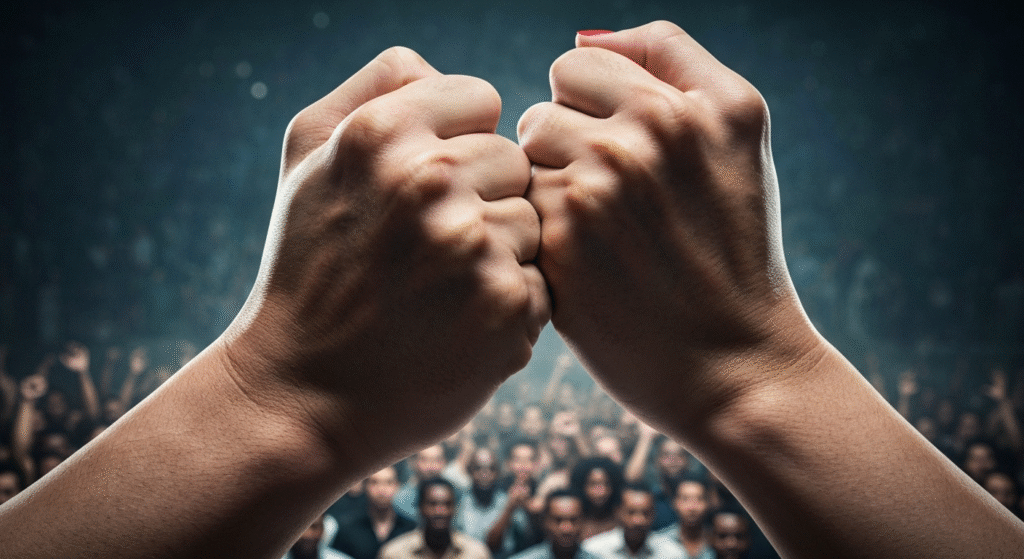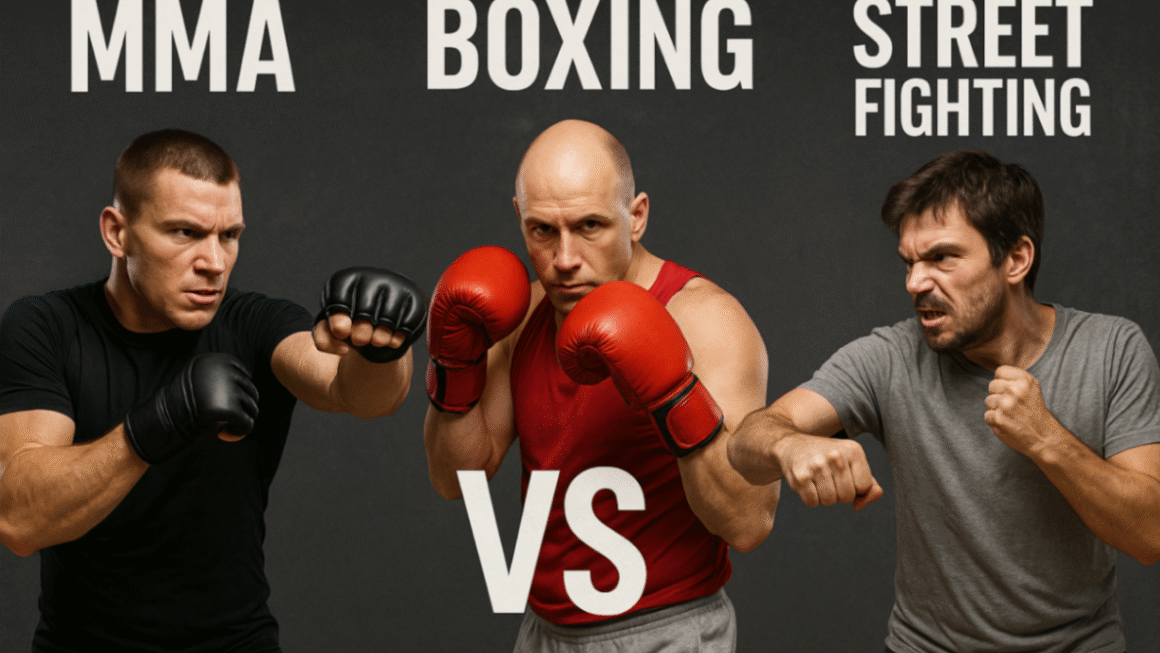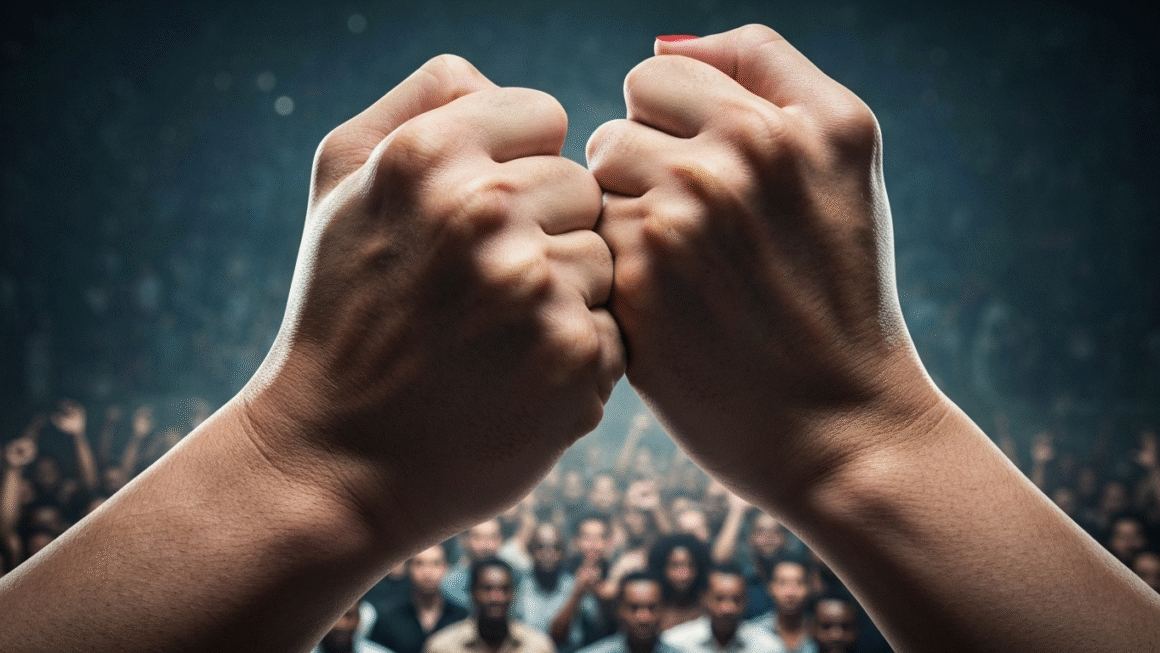Key Highlights
- A street fight is an unpredictable and unsanctioned altercation, fundamentally different from organized martial arts.
- The best form of self-defense is always prevention and de-escalation, as real-life fights can lead to serious injury.
- Most fights begin over petty reasons, such as bruised egos, misunderstandings, or environmental triggers like alcohol.
- While an aggressor often initiates the conflict, understanding basic etiquette can sometimes prevent fatal escalation.
- Effective self-defense relies on simple, direct techniques, not the complex moves seen in movies.
- Staying safe is the only true victory in a street fight.
Introduction
A street fight is not a sport; it is unsanctioned hand-to-hand combat that can erupt suddenly in any public place. With recent reports indicating an increase in violence in the United States, understanding the reality of these situations is more important than ever. Unlike a duel in a ring, a real-life altercation has no rules, no referee, and unpredictable outcomes. This guide will explore the unwritten etiquette of a street fight, the reasons they start, and the self-defense principles that can help keep you safe.
Understanding Street Fighting in the Real World

When you picture a fight, what comes to mind? Is it a regulated match between two trained athletes? In the real world, a street fight is the complete opposite. It is raw, chaotic, and dangerous, often over in seconds and driven by pure emotion rather than strategy or skill.
To protect yourself, you must first understand the environment. A street fighter operates without a rulebook, and the consequences can be severe. The following sections will break down the crucial distinctions between these brawls and formal combat disciplines.
Defining Street Fights vs. Martial Arts Competitions
At its core, a street fight is unplanned, violent combat between individuals or groups in a public setting. There are no safeguards, and the goal is often simply to dominate or injure the other person. The fight typically ends only when someone surrenders, is incapacitated, or is stopped by outside intervention.
This stands in stark contrast to martial arts competitions. These are sanctioned events governed by strict rules, weight classes, and the presence of a referee to ensure safety. The objective is to win based on points or a controlled submission, not to cause lasting harm.
Even with a black belt, your martial arts training might not fully prepare you for the sheer unpredictability of a real altercation. The absence of rules and the element of surprise create a high-stakes scenario where mat-based skills must be adapted instantly to survive.
Key Differences Between Street Fights and Military Combat
Just as street fighting differs from sport, it is also worlds apart from military combat. A street fight is often an impulsive, emotional conflict between untrained individuals over personal disputes. Military hand combat, on the other hand, is a disciplined skill used by trained soldiers to achieve a specific mission objective in a hostile environment.
Self-defense systems like Krav Maga were born from this need for real-world military effectiveness, focusing on neutralizing threats as quickly and efficiently as possible. This approach is tactical and goal-oriented, unlike the chaotic and often senseless violence of a typical street brawl.
The table below highlights the fundamental differences.
|
Feature |
Street Fight |
Military Combat |
|---|---|---|
|
Objective |
Often ego-driven, dominance, or reaction to a perceived slight. |
Mission-focused, neutralizing threats, survival in a hostile environment. |
|
Rules |
No official rules, highly unpredictable. |
Rules of engagement exist, but the primary goal is mission success. |
|
Training |
Participants are often untrained. |
Highly specialized, systematic training (e.g., Krav Maga, MCMAP). |
|
Environment |
Public spaces, often spontaneous. |
Planned operational areas, hostile territory. |
Common Reasons Street Fights Begin

Street fights rarely materialize out of thin air. They are almost always the result of specific triggers, whether environmental or psychological. An argument in a bar, a perceived insult, or the influence of alcohol can quickly escalate a tense moment into a physical confrontation.
Recognizing these catalysts is the first step toward effective prevention. By understanding why fights start in real life, you can better identify and avoid situations before they turn violent. The following sections will explore these common causes in more detail.
Environmental Triggers and Social Factors
The setting you are in can significantly increase the risk of a confrontation. Fights are more likely to break out in poorly supervised areas or places where tensions are already high, like crowded bars and pubs. Alcohol is often a major factor, as it impairs judgment and lowers inhibitions, making people more prone to overreacting.
This is especially true when drunk people are involved, as they may fail to properly assess a situation. Other triggers are rooted in social dynamics, where violence is used to establish a reputation or assert dominance over others.
Common factors that can lead to a street fight include:
- Confrontations involving drunk people.
- Actions from bullies attempting to intimidate or dominate someone.
- Disputes related to gang activity or territory.
- Incidents of domestic violence that spill into public view.
Misunderstandings, Egos, and Escalations
Beyond external factors, many fights start for incredibly petty reasons. A simple misunderstanding, a dirty look, or an accidental bump can be perceived as a direct challenge to someone’s ego, sparking an aggressive response.
Once this initial altercation begins, the situation can experience a rapid escalation. In many observed fights, as soon as one person shows aggression, the other immediately follows suit, closing the window for a peaceful resolution. Neither party wants to be the one to back down, and pride takes over.
This is where ego becomes an enemy. An individual driven by the need to “win” a confrontation is less strategic and more likely to telegraph their moves, leading them into a dangerous and unnecessary street fight.
The Basic Code of Street Fighting Etiquette
Discussing “etiquette” for a lawless brawl might seem contradictory, but even in a street fight, there are often unwritten rules. These unspoken agreements are not about honor or sportsmanship; they are about mutual, albeit primitive, lines that participants are hesitant to cross.
This informal code is what often keeps a typical fight from escalating into a deadly assault. Understanding these subtle boundaries can offer insight into the psychology of a real-life confrontation. We’ll examine what is generally considered acceptable and what is almost universally forbidden.
What’s Considered Acceptable Behavior During a Fight
In the chaos of a street fight, “acceptable behavior” is a loose term defined by the immediate need for self-defense without resorting to excessive force. The goal is to neutralize the threat so you can disengage, not to inflict permanent or life-threatening harm unless absolutely necessary.
The fight is typically considered a one-on-one affair. When friends jump in to help, it dramatically changes the dynamic and is often seen as breaking a core understanding.
Generally, the following behaviors are part of this informal code:
- The fight remains between the two initial individuals.
- Fighting stops when one person surrenders or is clearly unable to continue.
- Weapons are not introduced into a fistfight.
- Kicks to the head of a downed opponent are usually considered off-limits.
- The primary focus is on fists and basic grappling to end the altercation.
Universal “Rules” and Unwritten Agreements
Certain unwritten rules form the bedrock of street fighting etiquette. Perhaps the most important one is knowing when the fight is over. To continue attacking an opponent who is already down and defeated is to cross a major line, turning a fight into a brutal assault.
Another universal understanding is that bringing a weapon to a fistfight breaks the “agreement.” Introducing a knife or other object instantly changes the encounter from a brawl to a potentially lethal situation, and all bets are off.
While this etiquette exists, you should never rely on it. These fragile rules can be shattered in an instant by an enraged or intoxicated aggressor. However, their existence explains why many spontaneous fights end without life-altering consequences.
Staying Safe: Prevention and De-escalation Tactics
Ultimately, the smartest way to handle a street fight is to ensure it never happens. Your long-term safety is far more valuable than a moment of pride. For this reason, prevention and de-escalation are the most effective self-defense skills you can learn.
Knowing how to spot and diffuse a volatile situation is your best defense. It can protect you from serious injury, emotional trauma, and legal repercussions. Let’s look at practical strategies you can use to avoid and exit confrontations safely.
How to Avoid Getting Involved in a Street Fight
Your primary tool for prevention is situational awareness. Being conscious of your surroundings, especially in crowded or potentially hostile environments, allows you to identify trouble before you are a part of it.
If you sense a conflict brewing, the best course of action is to withdraw immediately. The analysis of thousands of fights shows that most are avoidable if one person chooses to walk away before the first push or shove. A bruised ego is always better than a broken body.
Here are key steps for effective prevention:
- Always be aware of your environment and the people in it.
- If an argument starts, remove yourself from the situation.
- Do not respond to taunts or insults; simply ignore them.
- Try to avoid places known for frequent violence.
- Trust your instincts and leave if a situation feels unsafe.
Safe Ways to Diffuse and Exit Confrontations
What do you do if prevention fails and you find yourself in a direct confrontation? The next step is active de-escalation. This means using calm, non-threatening language and body posture to diffuse the attacker’s aggression. Keep your hands open and visible to show you don’t want a fight.
Your main goal should be to create an exit strategy. This isn’t about winning the argument; it is about creating enough space and time to leave safely. Back away slowly and steadily, and do not turn your back until you are at a safe distance.
Remember, in a real-life altercation, you are your own referee. There is no bell to signal the end of a round. You win when you can return home safely. Disengaging as soon as possible is the only victory that matters.
Self-Defense Techniques and Common Mistakes
Sometimes, despite your best efforts, a physical confrontation is unavoidable. When you are forced to defend yourself, knowing practical defensive techniques is critical. However, in these high-stress scenarios, many people make common mistakes that can put them in even greater danger.
This section will cover simple, effective moves that are proven to work in real-life situations. We will also highlight the critical errors you must avoid if a fight becomes physical, as your response in those first few seconds can determine the outcome.
Practical Moves That Work in Real-Life Situations
In a self-defense scenario, simple is always best. Complex, flashy moves often fail under the pressure of a real attack. You need direct and efficient techniques designed to create an opportunity for you to escape.
Many martial arts offer techniques that are highly effective for street survival. The key is to focus on disciplines that prioritize practicality and real-world application over sport or tradition. Great examples include boxing and Muay Thai.
Here are some practical skills that are invaluable:
- Krav Maga: This system is built for real-world self-defense, emphasizing instinctive reactions to common attacks.
- Boxing: Provides essential skills in punching, footwork, and head movement to avoid strikes.
- Judo/Wrestling: Since many fights end up in grappling on the ground, these arts teach crucial takedowns and control.
- Muay Thai: Known for its powerful knee and elbow strikes, it is devastatingly effective in close-quarters combat.
Mistakes to Avoid in High-Stress Encounters
During the chaos of a street fight, people often make critical errors. One of the most common mistakes is freezing or hesitating. Many individuals wait too long to defend themselves, allowing the attacker to land the first blow and immediately putting them on the defensive.
Another frequent mistake is relying on ineffective techniques. Most people have no plan and resort to pushing and shoving, which usually leads to grappling on the ground. If you lack ground-fighting skills, you are at a severe disadvantage. Also, avoid underestimating your opponent; the “crazy” or more determined person often wins, regardless of size.
Finally, do not let your ego make decisions for you. People driven by anger telegraph their moves and make rash choices. Stay calm, be strategic, and focus on one goal: getting away safely.
Conclusion
In conclusion, understanding the etiquette surrounding street fighting is crucial for anyone who finds themselves in such situations. It’s about more than just engaging physically; it’s a complex scenario involving respect, awareness, and strategy. By adhering to the basic code of conduct, you not only protect yourself but also maintain a level of integrity in a chaotic environment. Remember that avoiding conflict whenever possible is the best outcome, but if you must engage, being informed and prepared can make a significant difference. Stay safe, and always prioritize de-escalation tactics. For more insights and strategies on self-defense and conflict resolution, reach out for a free consultation.
Frequently Asked Questions
Is it illegal to participate in a street fight in the United States?
Yes, engaging in a street fight is illegal in the United States. Depending on the state and the details of the altercation, participants can face criminal charges such as affray, disorderly conduct, or assault. If serious injury occurs, the legal penalties become much more severe.
Do fighting video games improve real-life fighting ability?
No, playing fighting video games does not develop real-life fighting skills. A real fight is unpredictable and requires physical conditioning, situational awareness, and emotional control, none of which are learned from a game like Street Fighter. Effective self-defense comes from dedicated training.
What psychological traits can determine the outcome of a street fight?
The outcome of a street fight is heavily influenced by psychological traits. An aggressor often displays impulsivity and a history of violence. However, the ability to control your ego, remain calm under pressure, and be more determined than your attacker are key factors that can decide who walks away.




